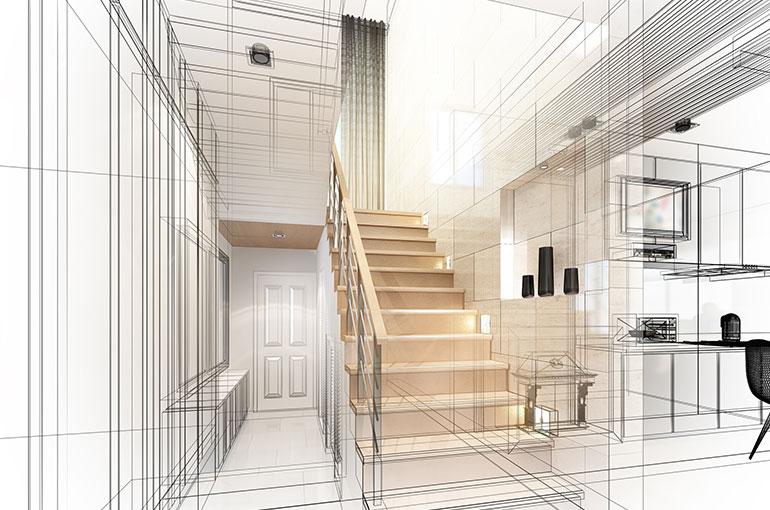A Thorough Introduction of Building Designs and Their Influence on Modern City Preparation and Development
Architectural designs have actually long offered as a mirror to the societal worths and technological advancements of their time, playing a critical role in forming modern-day city planning and development. From the majesty of Neoclassicism to the utilitarian method of Brutalism, each style has presented one-of-a-kind concepts that influence metropolitan appearances and capability.
Historic Overview of Building Designs

As societies transitioned via the Center Ages, Gothic style arised, identified by its verticality and detailed outlining, matching the spiritual aspirations of the period. The Renaissance noted a resurgence of timeless perfects, merging art and architecture in ingenious means that affected subsequent designs throughout Europe.

Today, architectural designs remain to advance, driven by globalization and sustainability problems, showing a vibrant interplay in between heritage and development. This historic summary highlights the relevance of architecture as a mirror of social advancement and as a driver for urban growth.
Trick Architectural Styles Explained
The variety of architectural designs reflects the myriad influences that form our developed environment, each embodying unique characteristics and cultural importances. Secret building styles include Classical, Gothic, Baroque, Modernism, and Postmodernism, each representing distinct historic contexts and aesthetic viewpoints.
Classic design, rooted in old Greece and Rome, emphasizes symmetry, proportion, and making use of columns (cda architects). On the other hand, Gothic architecture, prospering in the Middle Ages, is defined by sharp arches, ribbed safes, and flying buttresses, creating an ethereal high quality in sanctuaries. Baroque style, emerging in the 17th century, is marked by grandeur, fancy decoration, and a vibrant interplay of light and darkness
Modernism, which obtained momentum in the very early 20th century, prioritizes feature over form, utilizing new products like steel and glass to create minimalist structures. Postmodernism, responding against the austerity of Innovation, embraces eclecticism and historic recommendation, commonly integrating playful elements and paradox.

Impact on Urban Planning
In shaping the growth of cities, architectural styles substantially affect urban preparation decisions. The option of building style frequently dictates the aesthetic appeals, performance, and total character of urban environments.
Furthermore, architectural designs can influence zoning policies continue reading this and land utilize plans. Urban planners must consider the dominating building trends when creating districts, making sure that brand-new developments integrate with existing frameworks. This consideration promotes natural metropolitan landscapes and enhances area identification.
The implementation of certain building designs can likewise affect socioeconomic elements within a city. For instance, premium modern layouts might draw in upscale locals and businesses, causing gentrification, while extra budget friendly real estate remedies could focus on useful and sustainable designs to fit diverse populations. Eventually, the interplay between architectural designs and metropolitan planning Check This Out produces dynamic cities that show both historic context and contemporary demands, shaping the lived experiences of their residents
Sustainability and Modern Architecture
Architectural styles play a critical function in attending to modern difficulties, particularly in the realm of sustainability. As urban locations increase and ecological concerns heighten, contemporary design increasingly embraces sustainable style principles that focus on energy effectiveness, source conservation, and minimal ecological influence.
Contemporary architectural motions, such as biophilic style and environment-friendly style, advocate for frameworks that integrate with their environments, utilizing natural products and advertising biodiversity. These styles usually integrate eco-friendly energy sources, such as solar panels and wind generators, to lower dependence on nonrenewable fuel sources and lower carbon footprints.
In addition, the integration of advanced technologies, such as smart building systems, enhances energy administration, optimizing source use while guaranteeing resident comfort. Cutting-edge water monitoring techniques, consisting of rain harvesting and greywater recycling, further add to lasting urban atmospheres.
Notably, sustainability expands beyond ecological worries; it encompasses social and financial measurements. By promoting community wellness and promoting inclusivity, contemporary building designs line up with sustainable growth goals. Consequently, the evolution of building practices proceeds to shape durable cities that not only meet the requirements of the here and now yet likewise secure the future for generations ahead.
Community Interaction in Style
Neighborhood interaction in layout works as a crucial bridge in between engineers and the populaces they serve, ensuring that the built setting reflects the needs and aspirations of its individuals. This joint process invites community members to contribute their understandings and choices, here are the findings promoting a feeling of ownership and duty towards the rooms they live in.
Reliable neighborhood interaction employs numerous approaches, such as workshops, surveys, and public online forums, to collect varied point of views. These methods promote a two-way dialogue, allowing designers to understand neighborhood contexts while empowering locals to voice their issues and desires. This inclusivity not just improves the layout top quality however additionally advertises social equity by attending to the special obstacles faced by marginalized teams.
Moreover, neighborhood engagement can bring about cutting-edge solutions that may not arise in a conventional style process. By incorporating regional understanding and cultural values, designers can produce spaces that resonate more deeply with individuals, boosting functionality and sustainability. Ultimately, prioritizing neighborhood involvement in design processes leads to environments that nurture social communications, assistance health, and strengthen neighborhood ties, consequently playing an essential function fit modern metropolitan landscapes.
Conclusion
Architectural designs have actually profoundly influenced modern-day city preparation and growth, mirroring progressing social and technical contexts. As cities proceed to grow and adapt, the continuous discussion in between architectural heritage and modern-day style principles will remain necessary in creating comprehensive, vivid rooms that boost top quality of life and promote social equity.